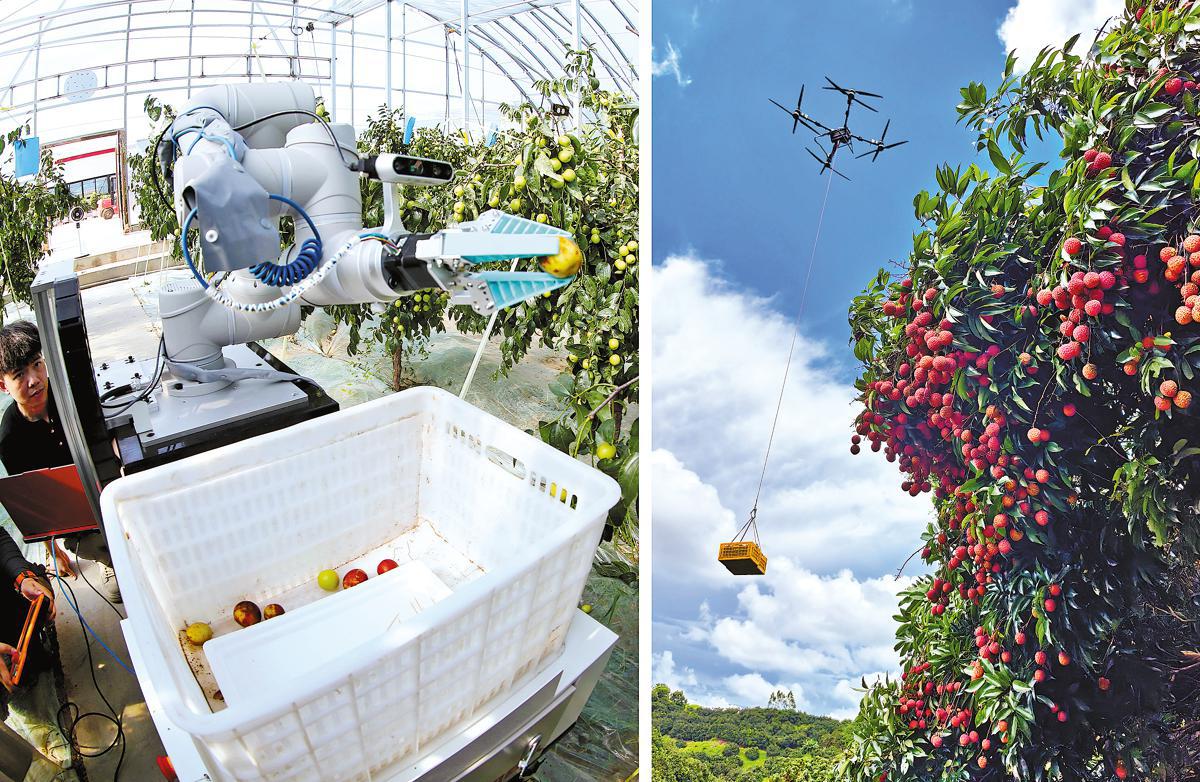Wheat harvest accelerated by advanced farming tech
Drones, combines and smart planters boost efficiency despite heavy rain


Wheat harvesting across China is largely complete, propelled by advanced agricultural machinery and new technologies that have accelerated planting and field management. The modern operations have driven efficiency in the sector despite challenging weather conditions.
This summer's harvest saw the widespread deployment of more than 800,000 combine harvesters nationwide, with over 200,000 engaged in cross-regional operations, according to the Ministry of Agriculture and Rural Affairs.
Domestically produced combines capable of processing 9 to 10 kilograms of wheat per second emerged as the backbone of the harvest, boosting daily average harvesting areas to 5.33 hectares per machine, an increase in efficiency of more than 30 percent compared with five years ago.
Regions took advantage of intermittent sunny periods at the beginning of summer to expedite harvesting and adjusted workflows to align with crop ripening windows. This ensured that the process concluded two to three days faster than typical timelines.
After reaching the halfway point on June 5, regions accelerated harvesting, covering about 666,667 hectares per day.
Despite multiple rounds of heavy rainfall during the season, authorities and farmers responded effectively. In late May, as strong rainfall was forecast for Henan, Hubei, and Anhui provinces, more than 6.67 million hectares of wheat were harvested in just five days through interprovincial coordination.
When Jiangsu province faced heavy rains in early June, 19,000 dryers were deployed to rapidly process over 2.4 million metric tons of wet grain, preventing spoilage, according to the ministry.
By June 24, Shanxi province had completed 99.64 percent of its wheat harvest. Since the province began its summer harvest on May 20, a total of 351,000 agricultural machines have been deployed, including 16,000 wheat combine harvesters.
Thanks to subsidies for purchasing and upgrading equipment, machines handled more than 99 percent of the summer harvest, planting and field management. At the peak of its wheat harvest, the province set a record by deploying 12,000 combine harvesters in a single day, harvesting 56,267 hectares, according to the provincial agriculture and rural affairs department.
In many areas of Henan province, farmers now use unmanned precision planters equipped with Beidou satellite navigation, allowing for preset routes and automated planting.
"The Beidou-guided unmanned planter ensures uniform and robust seedlings, making management easier and saving labor and time," said Jiang Suxiang, a farmer in Huaxian county in Anyang.
In Shangqiu, Henan, new planters with intelligent sowing systems operate like field robots, using precise positioning and data computation to ensure accurate row and plant spacing. The technology has reduced sowing costs and increased seedling emergence rates.
Guo Dong, a senior agronomist at the Henan provincial agricultural technology promotion station, said the use of high-performance planters and resilient, high-yield corn varieties this year has laid a strong foundation for future production increases.
Meanwhile, agricultural drones are also enhancing crop management. In Jiaopenjing village in Chongqing, technicians are using plant protection drones that provide efficient spraying and strong penetration of agricultural chemicals. The village's cooperative, which operates 60 drones, has reduced production costs by more than 15 percent.
Zhu Yubo, an experimental engineer at China Agricultural University's College of Land Science and Technology, emphasized the critical role of summer planting for food security. He recommended adopting scientific models such as crop rotation to improve soil fertility and enhance sustainability.
The prompt planting of autumn crops, including rice, corn and soybeans, after the summer harvest is important to ensure efficient land use and a strong foundation for this year's total grain output, Zhu said.
zhaoyimeng@chinadaily.com.cn




































